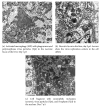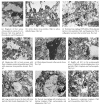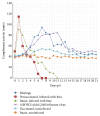Adapted Lethality: What We Can Learn from Guinea Pig-Adapted Ebola Virus Infection Model
- PMID: 26989413
- PMCID: PMC4775767
- DOI: 10.1155/2016/8059607
Adapted Lethality: What We Can Learn from Guinea Pig-Adapted Ebola Virus Infection Model
Abstract
Establishment of small animal models of Ebola virus (EBOV) infection is important both for the study of genetic determinants involved in the complex pathology of EBOV disease and for the preliminary screening of antivirals, production of therapeutic heterologic immunoglobulins, and experimental vaccine development. Since the wild-type EBOV is avirulent in rodents, the adaptation series of passages in these animals are required for the virulence/lethality to emerge in these models. Here, we provide an overview of our several adaptation series in guinea pigs, which resulted in the establishment of guinea pig-adapted EBOV (GPA-EBOV) variants different in their characteristics, while uniformly lethal for the infected animals, and compare the virologic, genetic, pathomorphologic, and immunologic findings with those obtained in the adaptation experiments of the other research groups.
Figures




References
-
- Chepurnov A. A., Chernukhin I. V., Ternovoi V. A., et al. Attempts of creating a vaccine against Ebola fever. Voprosy Virusologii. 1995;40(6):257–260. - PubMed
Publication types
LinkOut - more resources
Full Text Sources
Other Literature Sources

